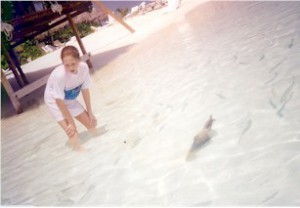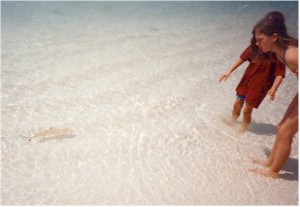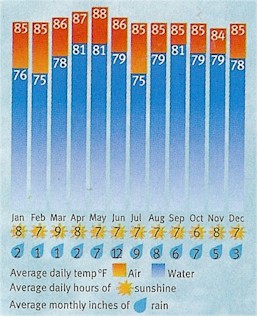

(our children, Isley and Chase, fish watching including ‘wading with the sharks’ – harmless, mini-black tipped reef sharks – on the right)
I had originally thought of creating a web site on the Maldives called ‘Maldives for Families’. It is renowned as a top diving and honeymoon destination, but we found it distinctively suitable for children. The first and foremost appeal is safety. You never really have to worry about them running off or for that matter being absconded because the islands are so small and there is little traffic on an off. If you lose sight of them, you know that they can’t be far because there is not far to go. In fact, in many islands, no one is ever more than shouting distance away.
Of course, the circumpresent water is always a potential danger, but of all fun in the sun beach destinations the Maldives are about as safe as you get. Their unique archipelago topology means than most islands are surrounded by shallow calm lagoons, often protected several metres offshore by a coral reef. This means that there is often very little current and swimming in the ocean is like swimming in a paddling pool (or your own personal aquarium when you consider all of the colourful fish around – always a delight for the children).
Despite the charms of the beach for children, one recommendation I always make to families of all ages is to select a resort with a pool (Resort Finder allows you to filter for Pools). After a while, the salt and sand get aggravating for children and the cleaner more confined pool makes for a crucially refreshing change of pace.
For a fine piece on other aspects to vacationing in the Maldives with children, check out the Sunday Times article “The Maldives: now for children too”.






